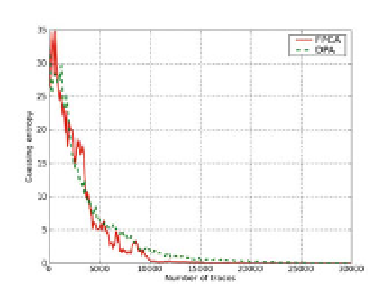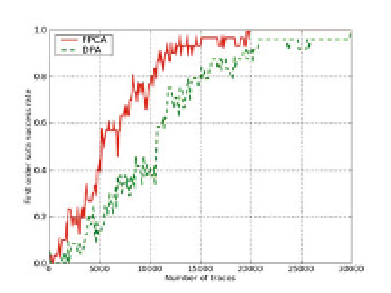Cryptography Reference
In-Depth Information
Fig. 5.
USM DES guessing entropy met-
ric
Fig. 6.
USM DES 1st-order success rate
metric
Fig. 7.
Masked-ROM guessing entropy
metric
Fig. 8.
Masked-ROM 1st-order success
rate metric
shown that such implementation is sensitive to VPA, which is based on variance
analysis [18,17]. Fig. 7 shows that the guessing entropy curve, related to FPCA,
approaches the best rank (the zero rank) more rapidly than VPA. Moreover, the
success rate metric depicted in Fig. 8 reveals noticeable differences between both
attacks.
5 Conclusion and Outlooks
In this work we proposed a new variant of SCA called FPCA, which is mainly
based on Principal Components Analysis (PCA), the powerful multivariate data
analytic tool. We have shown the eciency of FPCA on unprotected and pro-
tected cryptographic implementations. Moreover, we have empirically shown its
superior performance with regards to existing attacks (DoM, DPA, CPA, VPA).
Our future work consists in investigating new ways to improve FPCA. Actually,
we are looking for new applications based on other multivariate data analytic
tools such as the Linear Discriminant Analysis (LDA), PCA based Spearman cor-
relation, Kernel PCA or Independent Component Analysis (ICA), which have





Search WWH ::

Custom Search